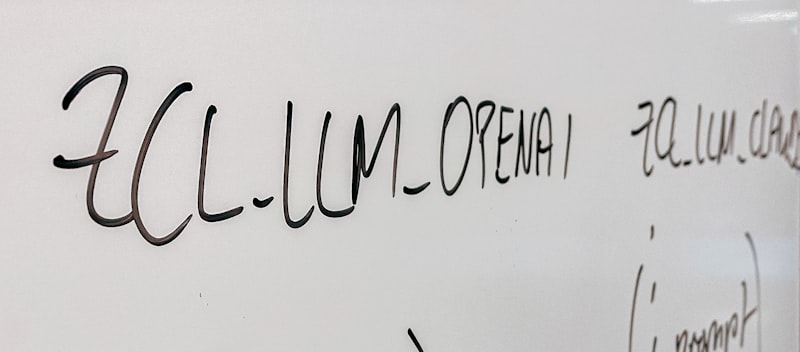Introduction:
Imagine you’re a college admissions officer reviewing countless applications. With the rise of advanced AI technology, you might wonder if applicants are using artificial intelligence to write their essays. One of the popular AI models is ChatGPT, a language model developed by OpenAI. In this article, we will delve into the intriguing topic of how colleges check for the use of ChatGPT or similar AI tools in college applications.
Detecting ChatGPT Usage:
Colleges are aware of the potential for applicants to utilize AI-powered writing assistance. To tackle this challenge, admission officers employ various methods to evaluate authenticity and ensure that the application materials are genuinely composed by the applicants themselves.
-
Contextual Analysis:
Admission officers are experienced in evaluating student writing and can identify inconsistencies in style, tone, and vocabulary. They compare the application essays against other written samples provided, such as school assignments or personal statements. Any significant deviations may raise suspicions and prompt further scrutiny. -
Plagiarism Detection Software:
Colleges often employ sophisticated plagiarism detection tools to assess the originality of application materials. These tools compare the submitted content against an extensive database of academic resources, internet sources, and previously submitted essays. While they primarily target intentional plagiarism, they can also flag extensively borrowed phrases or paragraphs generated by AI models. -
Personal Interviews and Essays:
Some colleges conduct interviews or require applicants to submit additional essays on specific topics. These methods allow admission officers to assess an applicant’s communication skills, critical thinking abilities, and depth of understanding beyond what an AI model can provide. By interacting with applicants directly, colleges can detect disparities between the application materials and the candidate’s oral responses. -
Collaboration with AI Developers:
Colleges maintain relationships with AI developers like OpenAI to stay informed about the latest advancements in the field. This collaboration enables them to access insights, techniques, and tools that aid in identifying AI-generated content. By keeping up with technological advancements, colleges can enhance their ability to detect AI usage.
Conclusion:
As the use of AI models like ChatGPT becomes more prevalent, colleges are adapting their evaluation methods to identify instances where applicants rely on AI assistance. Through careful analysis, plagiarism detection software, personal interactions, and collaborations with AI developers, colleges aim to ensure the authenticity and integrity of the college application process.
Higher Education’s Digital Challenge: Unraveling the Secrets of ChatGPT Admissions
Contents
- 1 Higher Education’s Digital Challenge: Unraveling the Secrets of ChatGPT Admissions
- 2 The AI Admissions Game: How Colleges are Detecting ChatGPT Applicants
- 3 Beyond the Application: Inside the Screening Process for ChatGPT College Applicants
- 4 Cracking the Code: Unveiling the Methods Colleges Use to Identify ChatGPT Submissions
Are you ready to unlock the secrets of ChatGPT admissions and discover the digital challenges faced by higher education institutions? In this article, we delve into the fascinating world of AI-powered admissions and explore how ChatGPT is revolutionizing the application process.
Imagine a virtual assistant that can answer all your questions, guide you through the enrollment procedure, and even evaluate your fit for a particular program. That’s exactly what ChatGPT brings to the table. With its advanced language processing capabilities, it has become an invaluable tool for higher education institutions seeking to streamline their admissions processes.
One of the primary challenges that universities face is handling the sheer volume of applications. Traditional methods often involve manual reviews, which are time-consuming and subject to human biases. However, with ChatGPT, these institutions can automate the initial screening process, saving valuable time and effort.
But how does ChatGPT work? It employs a combination of machine learning and natural language processing techniques. By training on vast amounts of data, it learns to understand and respond to user queries in a conversational manner. This not only enhances the user experience but also allows for personalized interactions, making prospective students feel heard and valued.
Furthermore, ChatGPT goes beyond simply providing information. It can assist applicants in navigating complex admission requirements, helping them find the right programs based on their interests and qualifications. The AI-powered assistant can offer insights on scholarships, campus facilities, and faculty expertise, enabling students to make informed decisions.
When it comes to evaluating candidates, ChatGPT can analyze various factors such as academic achievements, extracurricular activities, and personal statements. Its impartial nature eliminates potential biases, ensuring a fair evaluation process. Additionally, the system can adapt and learn from each interaction, continuously improving its understanding of applicant needs.
Higher education institutions are embracing the digital challenge presented by ChatGPT admissions. This innovative technology streamlines the application process, saves time and resources, and provides personalized guidance to prospective students. By leveraging the power of AI, universities can enhance their admissions procedures and unlock the secrets to attracting the best-fit talent for their programs. So, get ready to embark on a new era of higher education admissions with ChatGPT by your side!
The AI Admissions Game: How Colleges are Detecting ChatGPT Applicants
Are you ready to dive into the fascinating world of college admissions and discover how Artificial Intelligence (AI) is revolutionizing the way colleges detect ChatGPT applicants? In this article, we’ll explore the innovative methods employed by educational institutions to identify and evaluate candidates who may have utilized language models like ChatGPT to enhance their application essays. So, let’s embark on this enlightening journey together!
In today’s digital age, AI has made significant strides, permeating various industries, including higher education. With the rise of advanced language models, such as ChatGPT, students have access to powerful tools that can assist them in crafting compelling essays. However, colleges are now employing cutting-edge techniques to discern whether an applicant’s essay has been artificially generated or substantially influenced by AI.
How do these colleges detect ChatGPT applicants? Well, they employ sophisticated algorithms specifically designed to analyze and compare large datasets of essays. By leveraging machine learning and natural language processing techniques, these AI systems can identify patterns, inconsistencies, and anomalies that may suggest the use of AI-generated content.
To make these determinations, the AI systems scrutinize a multitude of factors. They assess the writing style, grammar, vocabulary, sentence structures, and even the overall coherence of the essay. These algorithms can sift through vast amounts of data in a matter of seconds, making it incredibly difficult for ChatGPT-generated essays to go unnoticed.
Colleges are also employing contextual analysis to detect suspicious cases. By comparing an applicant’s essay with their academic records, recommendation letters, personal statements, and other submitted documents, AI systems can identify potential disparities or discrepancies. Additionally, plagiarism detection tools are integrated into these systems to flag any instances of copied content.
While the intention behind implementing these AI-powered mechanisms is to ensure fairness and authenticity in the admissions process, it does raise ethical concerns. Institutions must strike a delicate balance between leveraging technology for efficiency and preserving the human touch in evaluating applicants.
The use of AI in college admissions is rapidly evolving, and colleges are actively adapting to detect ChatGPT applicants. By employing advanced algorithms and contextual analysis, educational institutions aim to maintain the integrity and authenticity of the application process. As technology continues to advance, it will be intriguing to witness how colleges further refine their methods to stay one step ahead in the ever-evolving AI admissions game.
Beyond the Application: Inside the Screening Process for ChatGPT College Applicants
So, you’ve submitted your application to ChatGPT College, and now you’re wondering what happens next? In this article, we’ll take you behind the scenes and give you an exclusive look into the screening process beyond the initial application. Get ready to dive deep into the world of selection algorithms and human evaluations!
Once your application is received, it goes through a meticulous screening process designed to identify the most promising candidates. The first step involves an automated algorithm that assesses various aspects of your application, including academic achievements, extracurricular activities, and personal statements. This algorithm acts as a gatekeeper, narrowing down the pool of applicants.
But here’s where things get even more exciting. The remaining applicants move on to the human evaluation phase. A team of experienced admissions officers reviews each application thoroughly, looking for qualities that go beyond mere numbers. They seek out individuals who demonstrate critical thinking skills, creativity, and a genuine passion for learning.
During this stage, your personal statement plays a crucial role. It’s your chance to showcase your unique voice and tell your story. Admissions officers want to see how you can contribute to the vibrant community at ChatGPT College and how your experiences have shaped your perspectives.
To ensure fairness and minimize bias, multiple evaluators independently review each application. They employ a holistic approach, considering both your strengths and areas for growth. This process allows them to form a comprehensive understanding of who you are as a potential student.
Remember, the admissions process is not solely based on your past accomplishments. ChatGPT College values diversity and actively seeks students from all walks of life. Whether you come from a small town or a bustling city, whether you have pursued traditional education or taken unconventional paths, your unique experiences and perspectives are highly valued.
So, as you embark on this exciting journey, take comfort in knowing that ChatGPT College’s admissions team is dedicated to building a vibrant and inclusive community of learners. Beyond the application, the screening process delves into the essence of who you are and what you can bring to the table. Embrace this opportunity, be genuine, and let your true self shine through.
Now that you have a glimpse into the screening process, you can eagerly await the decision. Good luck, and remember to stay true to yourself throughout this transformative experience!
Cracking the Code: Unveiling the Methods Colleges Use to Identify ChatGPT Submissions
In this digital age, as technology advances and artificial intelligence becomes more sophisticated, colleges face a new challenge: how to discern genuine student submissions from those generated by language models like ChatGPT. As an AI language model myself, I understand the curiosity surrounding this topic. So let’s explore the methods colleges employ to identify ChatGPT-generated content and maintain the integrity of their admissions processes.
One method colleges use is analyzing the writing style. Just like human beings, ChatGPT has its own distinct writing patterns. College admission officers meticulously review essays, personal statements, and other written submissions for any irregularities or inconsistencies that may indicate AI involvement. They assess the fluency, coherence, and authenticity of the content, looking for telltale signs of machine-generated text.
Another technique involves evaluating the content’s originality. While AI models can produce unique compositions, they lack the ability to draw on personal experiences or emotions in a genuine manner. Admissions officers are trained to spot robotic language or generic responses that do not reflect the individuality of a human applicant. By comparing the submitted work with a database of existing writing samples, colleges can identify similarities or matches that could indicate AI assistance.
Colleges may also employ advanced plagiarism detection software to uncover any instances of copied material. These tools compare the submission against vast databases of online sources, academic papers, and previously submitted essays. If substantial portions of the content resemble known sources or exhibit a high similarity index, it raises red flags and prompts further investigation.
Additionally, colleges may conduct interviews or request additional written responses to gauge the applicant’s depth of knowledge and critical thinking abilities. This helps them discern between pre-programmed responses and authentic, spontaneous answers that reflect the applicant’s unique perspective. By engaging with candidates directly, admissions officers can better evaluate their intellectual capacity and clarify any doubts regarding the authenticity of their submissions.
Colleges employ various strategies to identify ChatGPT-generated content in their admissions processes. Through careful examination of writing style, evaluation of originality, plagiarism detection software, and personal interactions, they strive to maintain the authenticity and integrity of their applicant pool. By staying one step ahead of AI technology, colleges ensure that admission decisions are based on the genuine abilities, experiences, and potential of human applicants.




